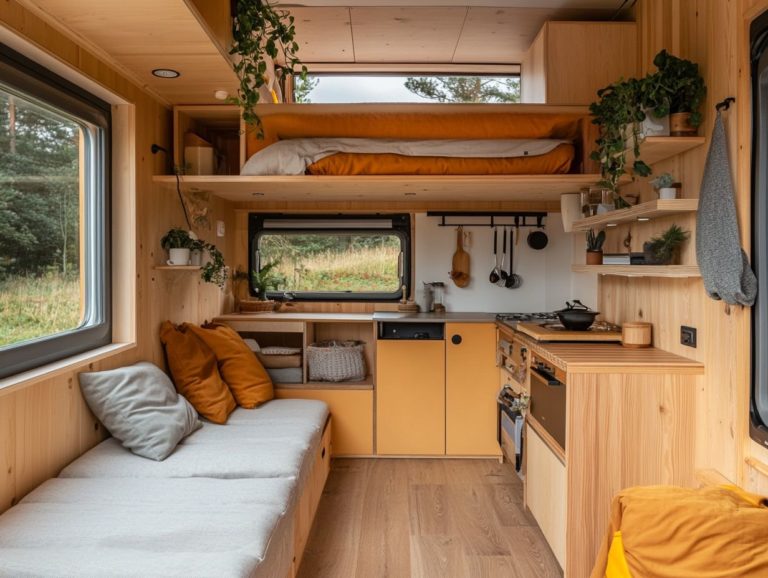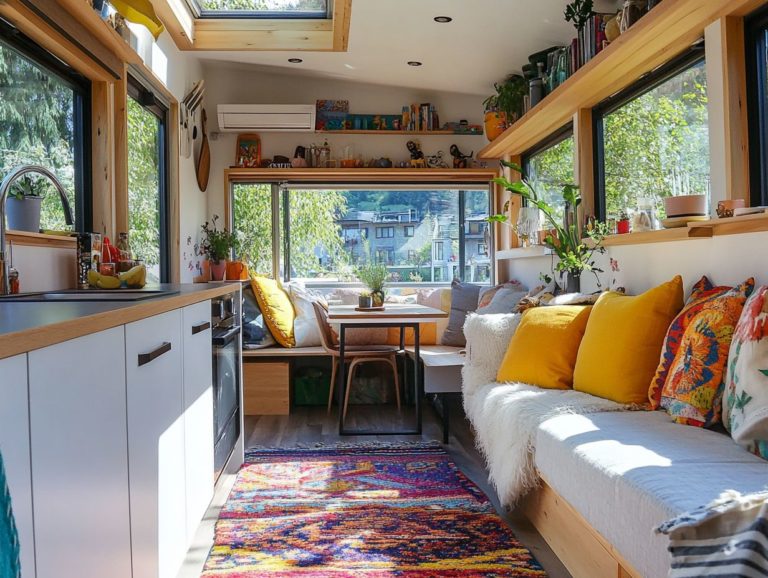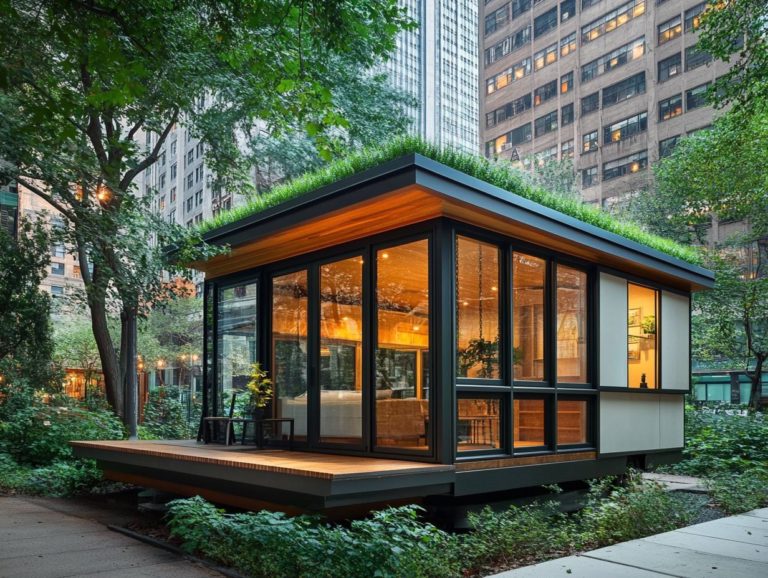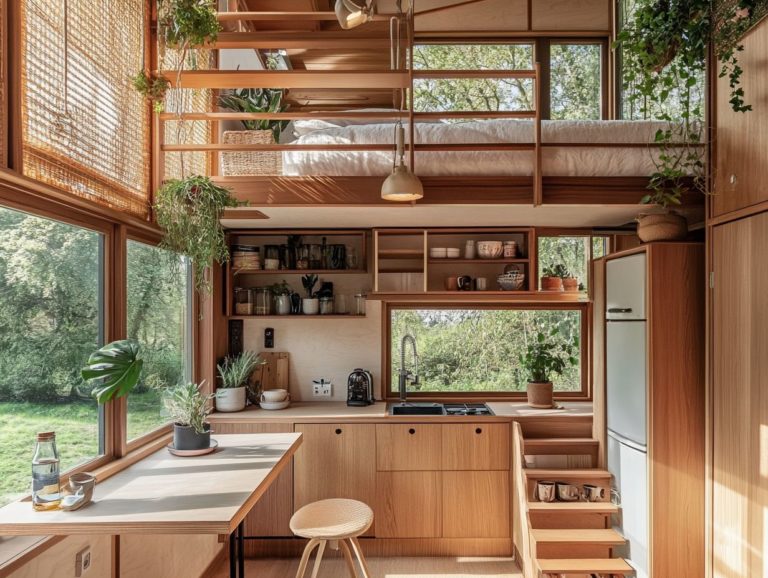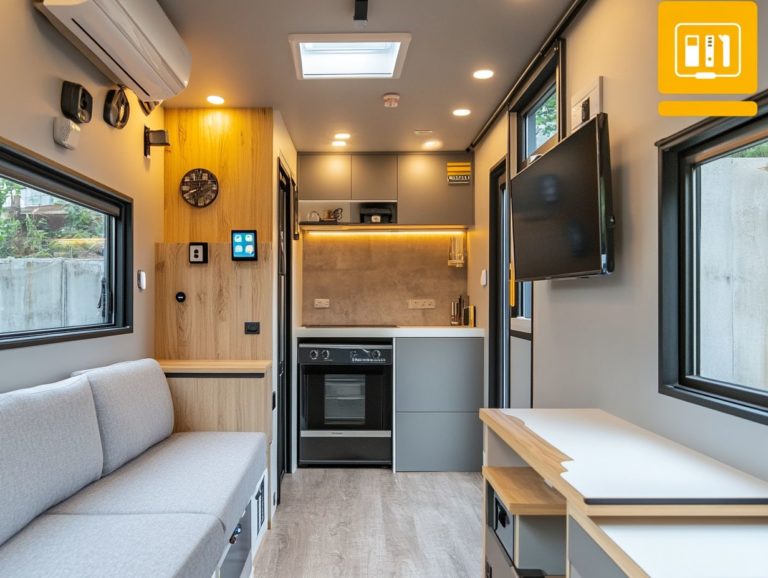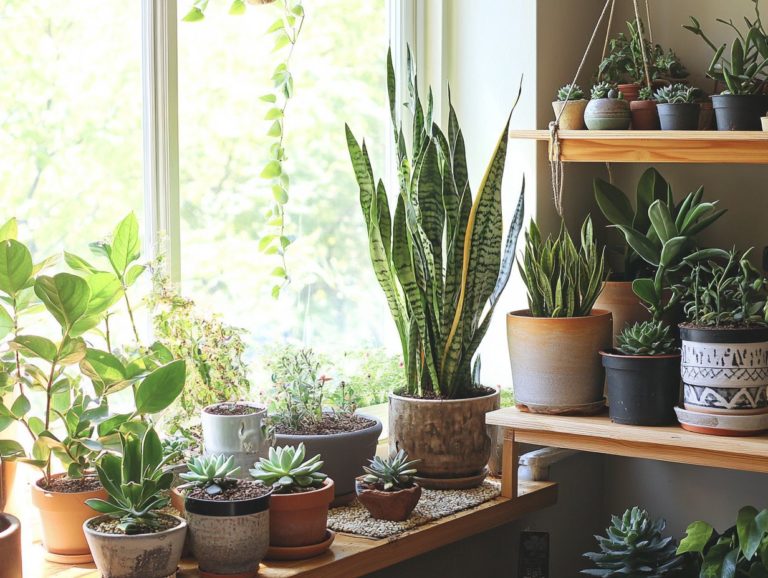5 Innovative Ideas for Tiny House Gardening
In a world where space is often at a premium, tiny house living brings both unique challenges and exciting opportunities for gardening enthusiasts like you!
Get ready to explore five innovative gardening techniques specifically designed for those residing in cozy quarters. From vertical gardening and container gardening to growing plants without soil and rooftop options, you ll uncover creative ways to maximize your green space!
You ll learn about the many benefits of gardening in a tiny home, explore low-maintenance plant choices, and gather tips for sustainable practices. Discover how you can cultivate a flourishing garden, even in the tightest of spaces!
Contents [hide]
- Key Takeaways:
- 1. Vertical Gardening
- 2. Container Gardening
- 3. Hydroponic Gardening
- 4. Rooftop Gardening
- 5. Window Box Gardening
- How Can Tiny House Dwellers Incorporate Gardening Into Their Lifestyle?
- What Are the Benefits of Gardening for Tiny House Dwellers?
- What Are Some Creative Ways to Maximize Space for Gardening in a Tiny House?
- What Are Some Low-Maintenance Plants That Are Ideal for Tiny House Gardens?
- How Can Tiny House Dwellers Ensure Sustainable Gardening Practices?
- What Are Some Tips for Maintaining a Tiny House Garden?
- Frequently Asked Questions
- What are 5 innovative ideas for tiny house gardening?
- How can vertical gardening be beneficial for tiny house gardening?
- What types of plants are suitable for container gardening in a tiny house?
- What are the advantages of using hydroponic gardening in a tiny house?
- How can companion planting be helpful for tiny house gardening?
- How can you incorporate roof gardening into a tiny house?
Key Takeaways:
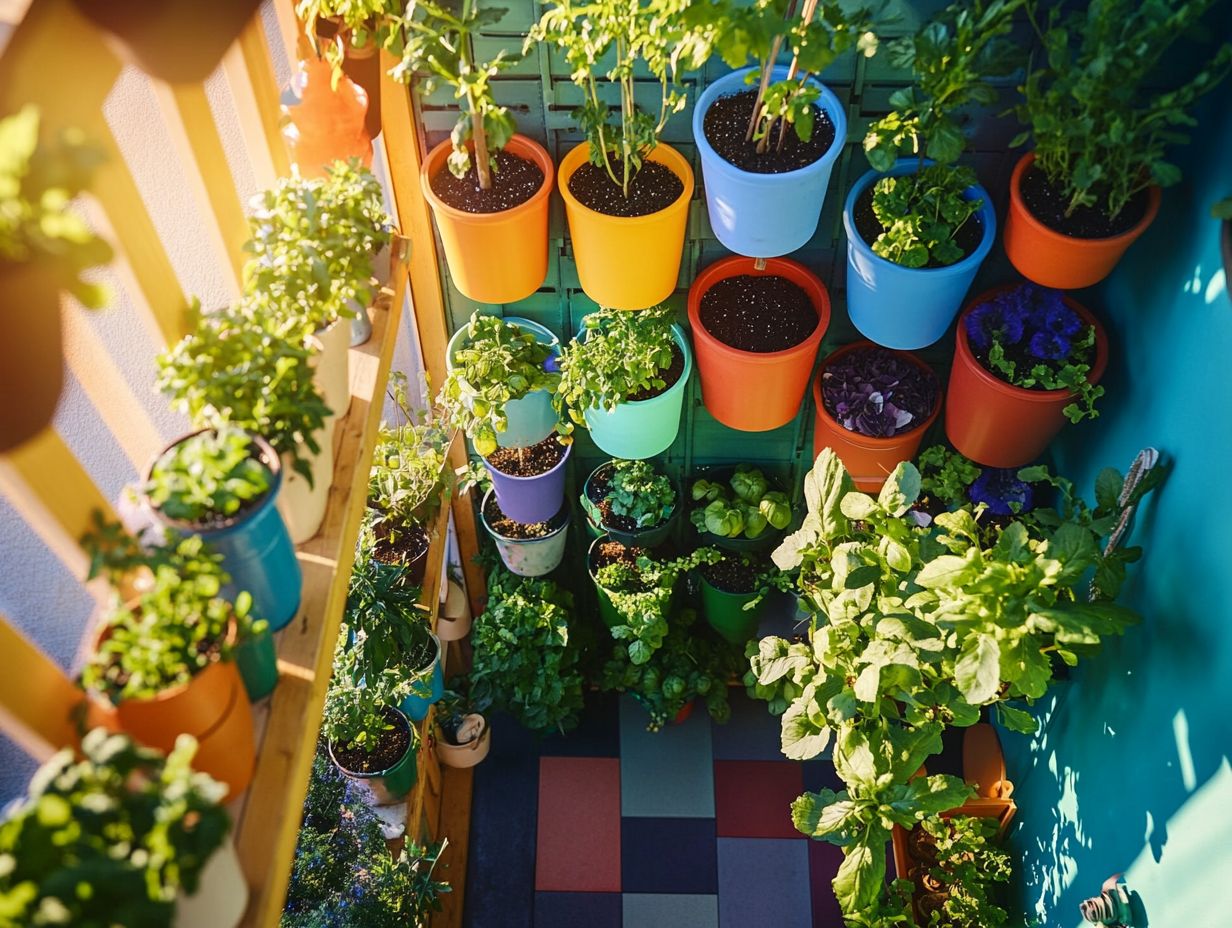
- Incorporating vertical gardening into a tiny house can help maximize space and create a beautiful display of plants.
- Container gardening is a great way to bring greenery into a tiny house without taking up too much space.
- Growing plants without soil is a sustainable and space-saving option for tiny house dwellers to grow their own produce.
1. Vertical Gardening
Vertical gardening transforms tiny outdoor spaces into lush, green oases. This method not only enhances your sustainable lifestyle but also improves curb appeal and functionality.
With vertical gardens, you can maximize your gardening potential without sacrificing precious square footage. This gives you the opportunity to grow native plants, herbs, and even vegetables in an eco-friendly way.
This innovative method adds not just beauty and texture but also creative solutions for urban dwellers yearning for outdoor living areas. Design elements like wall planters and trellises can elevate your vertical gardening experience.
When choosing plants, think about those that thrive in small spaces. Trailing herbs like thyme or vibrant flowers that invite pollinators can truly enhance your setup.
Establishing a consistent maintenance routine is key to ensuring these green installations thrive. Regular watering and pruning will keep your garden healthy. Opting for native and seasonal plants supports local ecosystems, making the whole process far more enjoyable.
2. Container Gardening
Container gardening allows tiny home dwellers to create vibrant outdoor spaces. You can grow a variety of vegetables, herbs, and flowers while maximizing your limited area.
This method offers unmatched flexibility in both design and plant selection. You can create personalized layouts that reflect your tastes and make the most of available sunlight.
With an array of containers at your disposal ranging from traditional pots to innovative vertical planters you can effortlessly adapt your garden for changing seasons. This means you can easily swap out annuals for perennials or transition to winter-friendly crops.
Managing pests becomes a breeze. Containers lend themselves well to organic pest control strategies, such as introducing beneficial insects or employing natural repellents. This approach nurtures a colorful, productive garden and encourages a more sustainable lifestyle by promoting local food consumption.
Start your gardening adventure today and turn your tiny space into a green paradise!
3. Hydroponic Gardening
Hydroponic gardening is a groundbreaking method that gives you the power to cultivate fresh vegetables and herbs indoors or outdoors without the need for traditional soil. This approach offers an efficient and sustainable solution for gardening in limited spaces.
By harnessing nutrient-rich water solutions, you can grow a variety of plants vertically, maximizing every square inch available. Among the popular systems, Nutrient Film Technique (NFT) a method where a thin layer of nutrient solution is circulated over plant roots and Deep Water Culture stand out for their effectiveness in delivering nutrients directly to plant roots. This not only speeds up growth rates but also dramatically cuts down on water usage compared to conventional gardening methods.
When embarking on your hydroponic journey, selecting the right plants such as leafy greens and herbs that thrive in these setups is crucial. Establishing a regular maintenance routine will further ensure your plants enjoy optimal health and productivity.
4. Rooftop Gardening
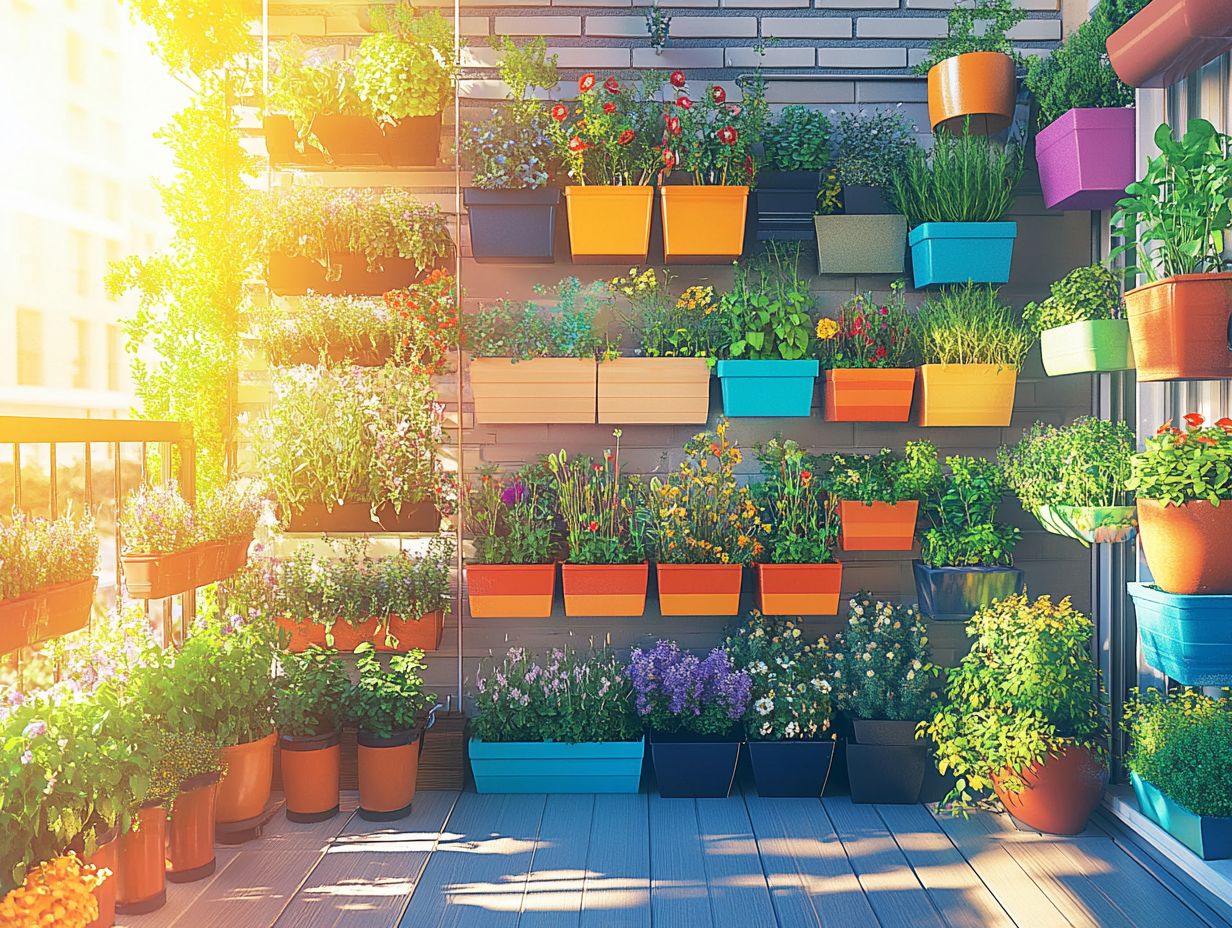
Rooftop gardening offers you a remarkable chance to transform otherwise unused vertical spaces into lush outdoor living areas your own serene retreats that enhance both the aesthetics and functionality of your tiny home.
This practice also beautifies your surroundings; it plays a vital role in promoting urban biodiversity by creating habitats for various pollinators and birds. Incorporating rooftop gardens into your lifestyle can significantly enhance air quality, as plants naturally filter toxins and produce oxygen.
When designing these green spaces, you must consider the local climate and choose plants that thrive in those conditions. Opting for native species not only supports local ecosystems but also often demands less maintenance, ensuring your garden remains vibrant with minimal effort.
Regular watering, occasional pruning, and the use of organic fertilizers will greatly aid in sustaining these green oases while utilizing composting techniques to enrich the soil.
5. Window Box Gardening
Window box gardening is an elegant and inviting way for you to bring greenery into your life, enhancing your home s curb appeal while treating yourself to a delightful view of vibrant flowers and fragrant herbs right outside your windows.
This approach not only infuses a splash of color into any urban landscape but also maximizes your limited outdoor space. For inspiration, consider creating a tiny house garden filled with low-maintenance air plants, colorful seasonal flowers, and fragrant culinary herbs like basil and mint.
To keep everything flourishing, ensure proper drainage and water regularly, especially during those hot months. Refresh your arrangement with the seasons adding festive decorations like pumpkins in autumn or twinkling lights during winter to keep your display engaging and vibrant all year round.
How Can Tiny House Dwellers Incorporate Gardening Into Their Lifestyle?
As a tiny house dweller, you can effortlessly weave gardening into your lifestyle by crafting functional outdoor spaces that mirror your commitment to sustainability. Embrace innovative gardening techniques that fit perfectly within your limited space and maintenance capabilities, enriching your living experience.
Explore the world of vertical gardening to maximize your vertical space, allowing you to cultivate a delightful array of herbs and flowers. Container gardening is another flexible option, perfect for those without traditional garden beds. To enhance your living space further, check out these 5 inspiring tiny house decor ideas. Consider hydroponic systems, gardening methods that do not use soil but rather water filled with nutrients, enabling year-round growth and granting you access to fresh produce without the hassle of extensive soil maintenance.
To keep your gardens thriving, regular upkeep is essential monitoring water levels and pruning plants will go a long way. By integrating comfortable outdoor furniture, you can transform these spaces into inviting areas for relaxation and social gatherings. Choose plants that flourish in your specific climate and available light, ensuring a fruitful and enjoyable gardening experience.
Start your gardening journey today and transform your tiny home into a lush paradise!
What Are the Benefits of Gardening for Tiny House Dwellers?
Gardening offers a wealth of benefits for tiny house dwellers like you. It promotes a sustainable lifestyle and enhances financial freedom through the joy of homegrown produce. Additionally, it transforms outdoor spaces into inviting retreats that inspire relaxation and creativity.
Beyond these perks, immersing yourself in gardening can lower your stress, providing a tranquil escape from the pressures of daily life. The simple act of nurturing plants and witnessing their growth instills a unique sense of accomplishment and joy, boosting your emotional well-being.
Physically, tending to a garden encourages a more active lifestyle and better nutrition, as fresh fruits and vegetables become easily accessible. Growing your own food can lead to substantial cost savings, freeing up resources for other important areas in your life.
Gardening offers a great way to build community connections. It often brings neighbors together to share tips, tools, or even the bounty of harvests. This deepens your ties to both your community and the natural world, all while enjoying shared garden elements such as fire pits or outdoor kitchens.
What Are Some Creative Ways to Maximize Space for Gardening in a Tiny House?
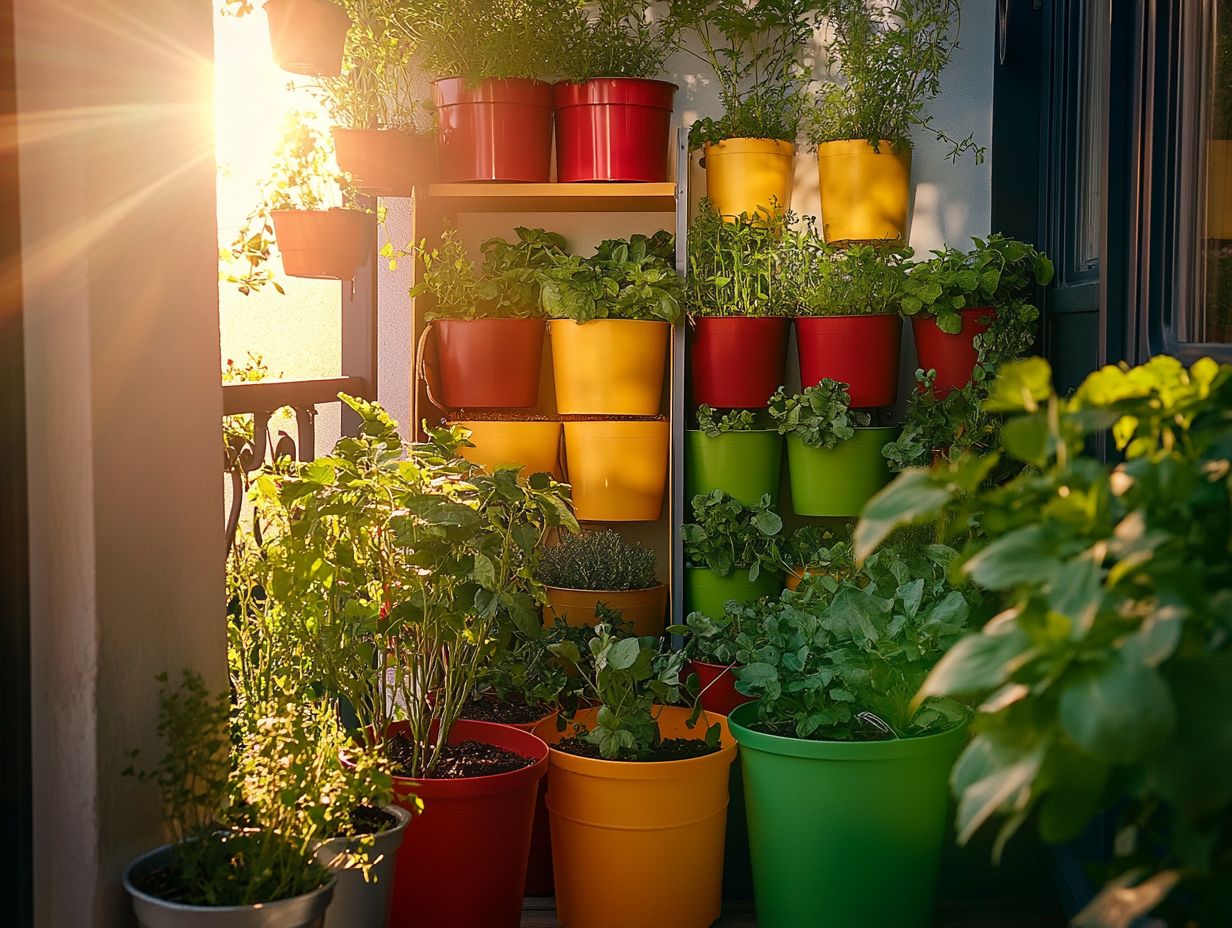
Maximizing space for gardening in a tiny house calls for innovative thinking and efficient design strategies, giving you the power to cultivate lush green spaces. Creative solutions like vertical gardens, container gardening, and layered landscaping techniques can help.
By adopting vertical planters, you can transform your walls and fences into vibrant displays of foliage and blooms. This conserves precious ground space. Incorporating hanging plants adds another delightful dimension, letting greenery cascade gracefully from your windows and eaves.
Integrating multi-use features like benches with built-in planters or tables that double as herb gardens can elevate both usability and aesthetics. Careful planning and thoughtful design are essential for ensuring that these elements harmonize beautifully, creating a cohesive outdoor sanctuary.
What Are Some Low-Maintenance Plants That Are Ideal for Tiny House Gardens?
Low-maintenance plants are perfect for your tiny house garden. They enable you to relish the beauty and benefits of gardening without the burden of extensive upkeep. Options like native plants, air plants, and hardy herbs blend seamlessly into your busy lifestyle.
These choices thrive with minimal attention and are well-suited for the limited space often found in compact living environments. For example, native plants typically require less watering and adapt well to local conditions, allowing them to weather seasonal changes with ease.
Air plants flourish in various settings, needing only occasional misting to stay hydrated. Resilient herbs like rosemary and thyme offer delightful flavors to your meals without demanding constant care. By incorporating these hardy varieties, you can cultivate a vibrant, flourishing garden that requires little effort, giving you the power to embrace your green thumb with confidence.
How Can Tiny House Dwellers Ensure Sustainable Gardening Practices?
Ensuring sustainable gardening practices is vital for you as a tiny house dweller. It promotes eco-friendly methods, dramatically cutting down water usage while enhancing soil health through composting. Using native plants that thrive in your local climate is also encouraged.
By incorporating effective composting techniques, you can transform kitchen scraps and yard waste into nutritious soil amendments. This significantly improves fertility and structure. Selecting native plants supports local wildlife and minimizes the need for pesticides and fertilizers, making maintenance easier.
Employing water-efficient practices like drip irrigation a method that delivers water directly to the roots of plants and rainwater harvesting can dramatically lower your water consumption. This keeps your garden lush while conserving this precious resource. Implementing these strategies simplifies garden upkeep and contributes to a healthier planet.
Start your gardening journey today and transform your tiny space into a green paradise!
What Are Some Tips for Maintaining a Tiny House Garden?
Maintaining a tiny house garden requires your consistent attention and awareness of seasonal changes. This keeps your plants thriving and looking vibrant!
Understanding the unique needs of each plant is critical. Different plants have specific requirements for sunlight, water, and nutrients.
Establishing a watering schedule helps provide the right moisture. This way, you can avoid the pitfalls of over or under-watering.
Use proper pruning techniques to encourage strong growth. Good air circulation also reduces the risk of mold and disease.
Employ strategic pest control measures. Methods like companion planting and organic repellents can effectively protect your garden from pests.
Adjust your care practices with the changing seasons. This ensures a thriving garden all year round.
Frequently Asked Questions
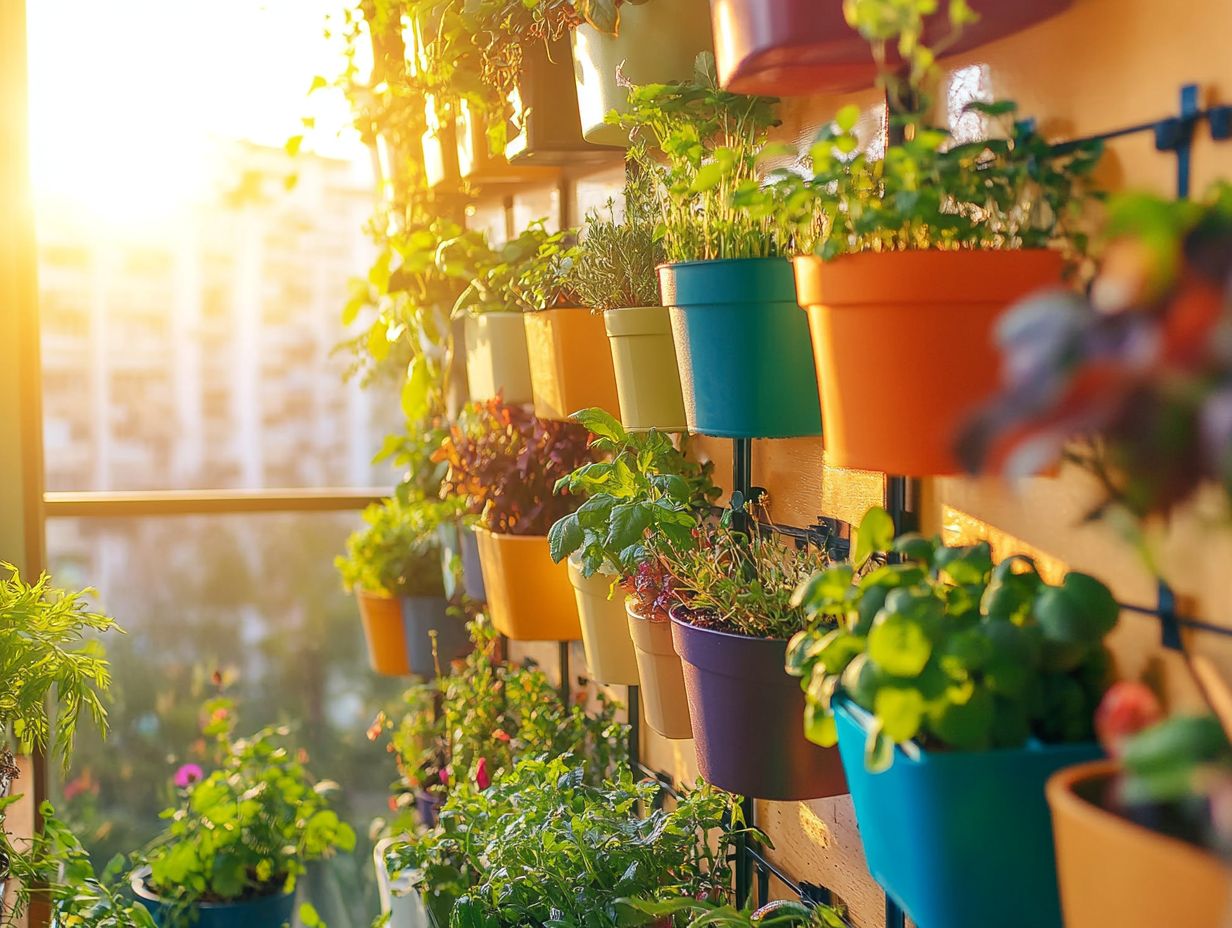
What are 5 innovative ideas for tiny house gardening?
- Vertical gardening: Utilize walls and fences to grow plants and save space.
- Container gardening: Use different sized containers to grow herbs, vegetables, and flowers.
- Hydroponic gardening: Grow plants using water and nutrients instead of soil.
- Companion planting: Plant different crops together to maximize space and resources.
- Roof gardening: Transform your tiny house roof into a mini garden with lightweight containers.
How can vertical gardening be beneficial for tiny house gardening?
Vertical gardening helps maximize limited space by utilizing walls and fences as growing areas. It also allows for better air circulation and natural light exposure for plants.
What types of plants are suitable for container gardening in a tiny house?
Herbs, leafy greens, and compact vegetables like cherry tomatoes, peppers, and carrots are ideal for container gardening. You can also grow flowers and succulents in containers for added beauty.
What are the advantages of using hydroponic gardening in a tiny house?
Hydroponic gardening eliminates the need for soil, making it a perfect solution for limited space. It uses less water and allows for year-round gardening, making it a sustainable option for tiny house living.
How can companion planting be helpful for tiny house gardening?
Companion planting is a method of planting different crops together to complement and benefit each other. This can help save space, control pests, and improve soil quality, making it an efficient way to garden.
How can you incorporate roof gardening into a tiny house?
You can transform your tiny house roof into a garden by using lightweight containers, such as plastic or fabric pots. Ensure to use a waterproof barrier and choose plants with shallow root systems that can withstand wind and sun exposure.
Start your garden today! By following these tips, you’ll enjoy a flourishing tiny house garden.

